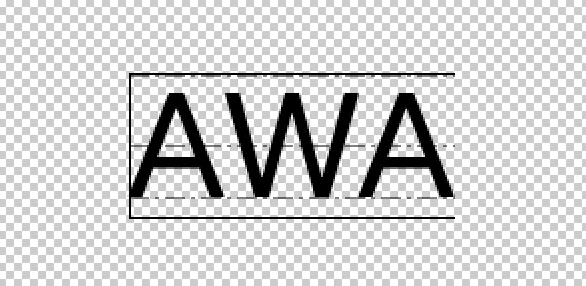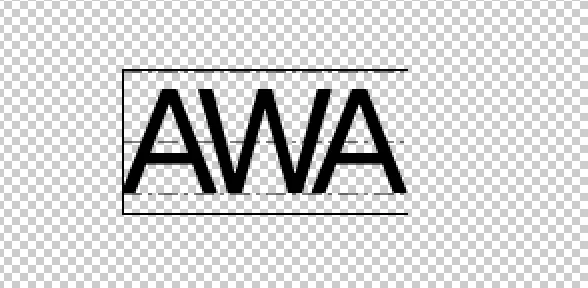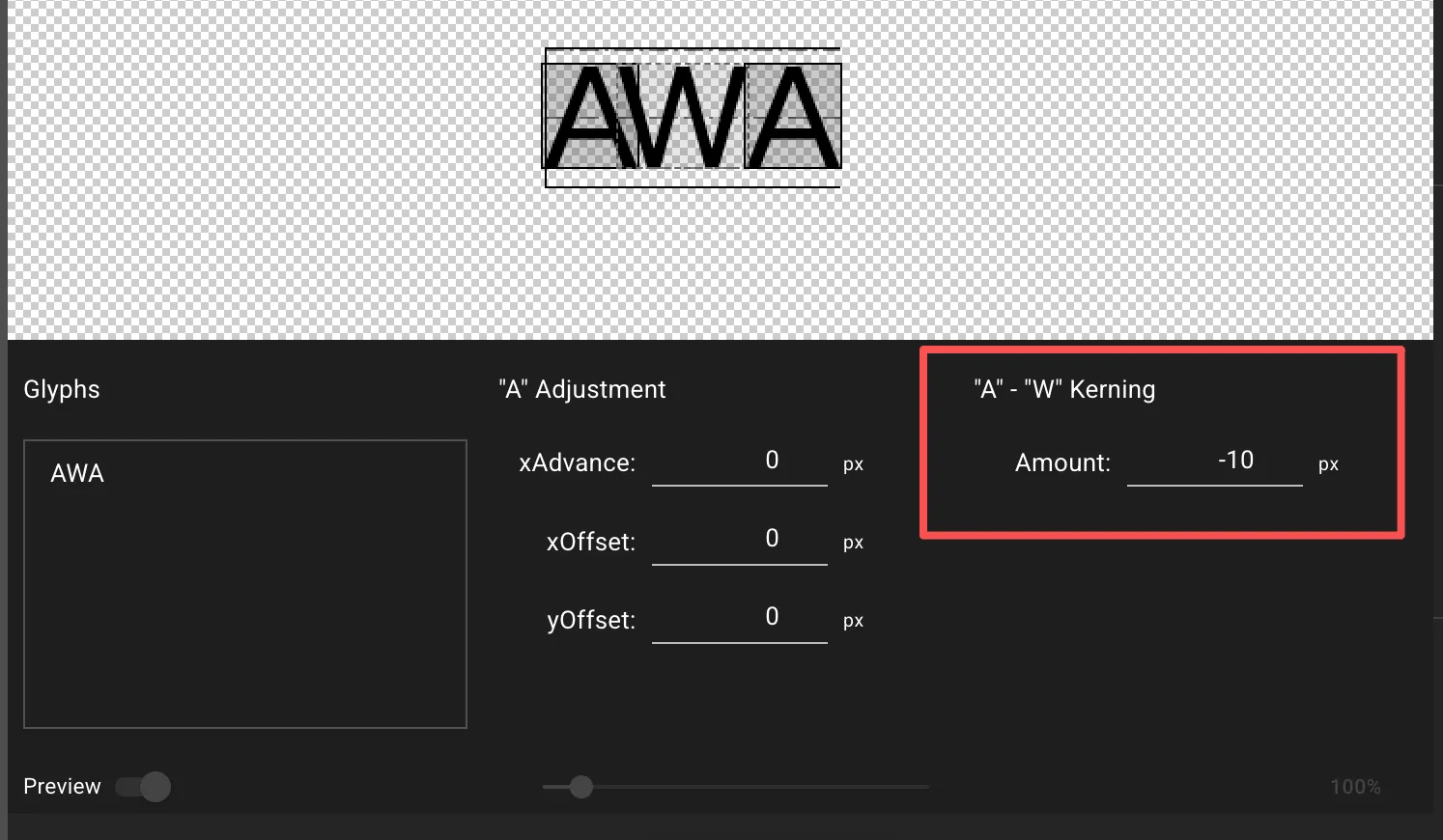Kerning Pairs
Optimize your font's character spacing by configuring kerning pairs for a professional and polished text layout.
Kerning is a fundamental technique in typography that involves adjusting the space between specific pairs of characters to create a more visually appealing and readable text. Proper kerning makes your font look professional and balanced.
In SnowB BMF, you have precise control over kerning pairs, allowing you to perfect your bitmap font’s layout.
Visualizing the Impact of Kerning
Section titled “Visualizing the Impact of Kerning”The difference is clear. Kerning corrects awkward spacing between letters, creating a more natural flow.
| Before: Default Spacing | After: Optimized with Kerning |
|---|---|
 |  |
How to Configure Kerning Pairs
Section titled “How to Configure Kerning Pairs”Adjusting kerning in SnowB BMF is an intuitive, visual process.
1. Activate Preview Mode
Section titled “1. Activate Preview Mode”First, click the Preview button in the main toolbar. This will render your text in the workspace with helpful visual guides for kerning.
2. Define a Kerning Pair
Section titled “2. Define a Kerning Pair”In the preview text area, simply type the two characters you want to kern. For example, to adjust the spacing between ‘A’ and ‘W’, type AW.
3. Adjust the Spacing
Section titled “3. Adjust the Spacing”Click on the first character of the pair (e.g., the ‘A’ in AW). The kerning panel will appear, allowing you to adjust the spacing between it and the next character.

- Amount: This is the kerning value in pixels.
- A negative value (
-10) moves characters closer. - A positive value (
10) pushes them farther apart.
- A negative value (
Your changes are reflected in real-time in the preview area, giving you immediate feedback. To adjust the kerning for WA, simply type WA and select the ‘W’.

Best Practices for Professional Kerning
Section titled “Best Practices for Professional Kerning”- Use Real Words: Test kerning with actual words and sentences to see how pairs behave in context.
- Focus on Common Pairs: Prioritize common problematic combinations, such as
AV,AW,VA,WA,To,P.,To,Yo. - Trust Your Eyes: Aim for visually consistent spacing, not mathematical equality. The goal is perceptual balance.
- Make Small Adjustments: Fine-tune kerning with small, incremental changes (1-3 pixels at a time) for the best results.